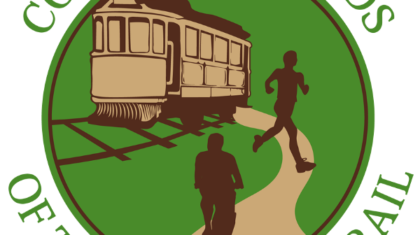The Urbanism Next Conference, held in Portland, OR last week, is emerging as one of the premier events focused on the impacts that new technology, new transportation options, and new data are bringing to the way we plan, build, and interact in our communities. This was the second annual event, hosted by researchers from the University of Oregon, and we saw over the last year that this emerging field has matured substantially. In 2018, Urbanism Next focused on asking the big questions that needed to be asked, and questioning the big answers that were being touted. In 2019, we can now look to pilots, case studies, and the experiences of agencies who are increasing their role in mobility management. The conversation has moved beyond speculation about autonomous vehicles and the oft-termed “heaven or hell” scenarios to a more holistic approach to the transportation system and more actionable strategies. Collectively, we are stripping away the mystique of “new mobility,” recognizing what is playing out on our streets today, and articulating the role that policy, partnerships, and regulations will have in shaping our dynamic future.

Here are some of our key takeaways from the three-day conference:
- Equity First: We have to plan for transportation equity now, not later. This came through in a range of presentations — from the City of Oakland’s groundbreaking program to fund roadway paving based on equity metrics to the implications of prioritizing mobility hub access for privately-run, for-hire mobility services. New Mobility Group Leader, Jean Crowther, AICP was part of a team of experts that spent a half-day discussing “Micromobility and Transit Service Delivery Opportunities in the Underserved Edges,” which set the tone for discussions throughout the conference. The group explored shifting trends of transit ridership, changing roles for transit agencies, and the fact that years of bike share usage and survey data has shown that you cannot “retrofit” equitable access. It has to be foundational, along with a recognition of the role of discrimination in forestalling equitable access.


- Mobility Hubs are the new “Kitchen Sink” of the Transportation System: Mobility hubs are shaping up to the be catchall solution for every facet of our local and regional transportation systems — tackling transit access, seamless transfers, aggregration of private mobility providers, vehicle storage of all types (from carshare to e-scooters), electric charging infrastructure, delivery distribution, and much more. To make this work, mobility hubs must integrate a coherent curb pricing strategy and the physical space must be seamlessly linked to the digital space. This could range from mobility-as-a-service (MaaS) platforms that enable easy and accurate trip planning on multiple modes to offering e-commerce pick-up and drop-off (e.g. Amazon lockers) and restaurants or shops, giving people additional reasons to use the hub. With a heightened focus on user experience, mobility hubs and the amenities they offer will help shift our culture toward accepting transitions between modes as a convenient and natural part of any trip.
- Speed Designated Lanes are Ready for Prime Time: The momentum for this idea, outlined in Alta’s Complete Streets 2.0: Putting Design Principles Into Action, is growing as an important tool for cities to explore further. The terminology continues to evolve, with mentions of “slow lanes” and “micro-mobility lanes” in addition to “speed-designated lanes.”
- Managing the Curb and Sidewalk Requires Balance and Metrics: When determining how to allocate curb space, pilots are showing that cities need to identify new ways of balancing needs. As e-commerce and brick and mortar business deliveries require more frequency, volume, and more door-to-door access, clear metrics for pedestrian comfort, public safety, and other public interests (i.e. climate change and access to services and transportation) will need to be established.
- Public/Private Partnerships are for the People: This continues to be a critical component in new mobility planning. For what is often referred to as 3P (or PPP), Gabe Klein added a fourth P — People, who have a primary stake in the outcomes of public and private sector partnerships. Regardless of what we call it, cities need to build capacity and allocate time and resources to establish and manage these partnerships while also investing the time and energy needed to develop their own strategy for mobility management. The partnerships are one component of that strategy, and not a replacement for it.
- More to come for Data Standards: Data often feels like an elephant in the room — we know there is a lot of it — but what do we do with it? Collectively, cities and the transportation field have gained a better grasp of this and are developing standards for how to code and share data. This is a critical step for creating meaningful public/private partnerships. We expect the next year to bring more rapid growth and change to this issue — with new best practices emerging around third party analysis, the role of legal teams in framing this process, and new strategies for trimming the fat of data collection to focus on what is usable and useful.
- The Same But Also Different — Investment vs Spending Money: The possible benefits of new mobility are shedding even more light on the need to shift our culture from thinking about spending to thinking about investing. To invest, we need to talk about better transportation alternatives and choices and tie them back to impacts that will reduce the use of single occupancy cars. The City of Portland’s new vehicles-miles-traveled (VMT) reduction metric in their E-Scooter Pilot 2.0 incentives program was noted multiple times at the conference and is reflective of at least one valuable outcome the City expects to see from the program. This way of thinking is not a new concept (as one example, the Milwaukee Drive Less Save More Report quantified the value of reduced drive alone trips to show return on investment), but it may be one that needs new attention as we think about investing in new programs to achieve outcomes, or about valuing right-of-way in a way that will advance broader goals.
Interested in learning more about our New Mobility Group? Contact Jean Crowther.
In the meantime, follow us on Twitter for real-time updates!


